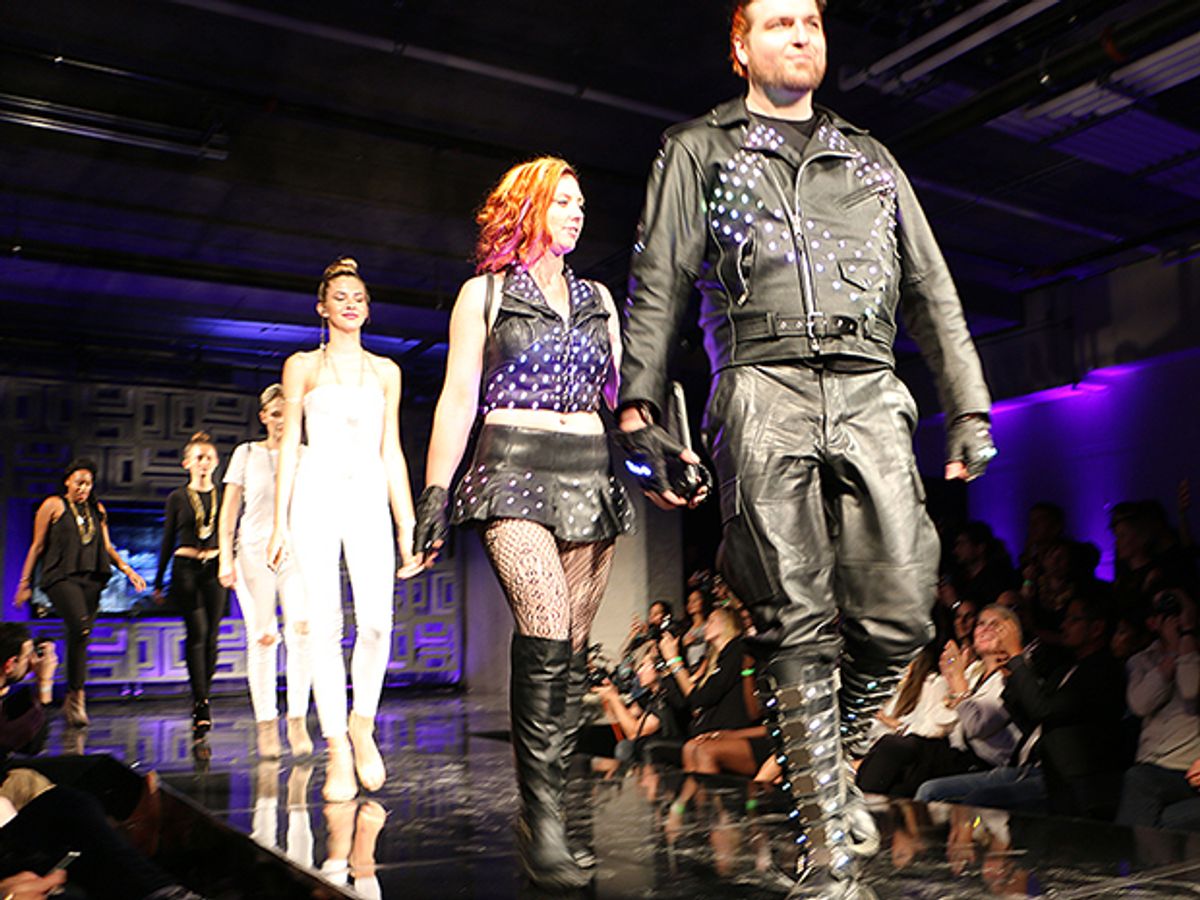
It took thousands of hours to design, craft, and test Pixeldelic’s leather jacket, pants, and boots adorned with a total of 257 LEDs. “These aren’t science fair projects,” says Joshua Hubert, an Oakland, Calif.–based fashion designer and Pixeldelic founder. “These are made with love and passion to make sure they work.”
From LED-embellished faux fur coats to 3D-printed armor, Hubert and other fashion designers’ tech-infused garments strutted down Silicon Valley Fashion Week’s runway in San Francisco last weekend. In keeping with the Silicon Valley vibe, a DJI Phantom drone delivered a mixed drink to help quench the master of ceremonies’ thirst.
So, how exactly do you turn your clothes into a walking light show? In the case of Hubert’s ensemble, the “control hub” is the key. It is a computer system and battery discreetly hidden in the model’s jacket and in his backpack. The system consists of four main components: a PixelPusher microcontroller, pocket-sized miniature router, LEDs, and lithium polymer battery. The PixelPusher manages an array of LEDs via an iPad app. Approximately one LiPo battery provides enough juice for nine or 10 hours, depending on the lighting pattern, says Hubert. “They’re incredibly efficient—that’s how I can get them [LEDs] so bright.”

Because the removable LEDs snap onto rivets, which are punched into the leather, you can maintain the garment without damage. “The LEDs are essentially a flexible custom-shaped external monitor to play any patterns you would on any standard screen,” Hubert says. Although you can’t throw the outfit into a washing machine, the LEDs are waterproof. The thick leather also provides a rigid base that supports the weight of the LEDs while offering the flexibility to ride a motorcycle or walk around.
“The clothes themselves are open source,” Hubert says, so users will have the files to use their own microcontrollers or software. “I never expected to get into fashion, ever,” he says. “It was more of a useful way to bring my art with me and have direct conversations with people about the technology.” Hubert’s outfit, including the jacket, pants, and boots, costs US $8,000. The women’s outfit, including the jacket, skirt, and boots, costs $10,000. Each outfit is custom designed.
Theresa Chong is a video host and multimedia technology journalist based in Palo Alto, Calif. As on-camera talent, she has performed science experiments for “Discovery News,” explained how virtual reality works for USA Today, and interviewed Adam Savage for IEEE Spectrum. She has written about wearables for Scientific American and travel tech for Architectural Digest. With a DSLR, GoPro, and green screen by her side, she has produced digital videos of robots, driverless cars, and 3D printing. She earned a master’s degree from Northwestern University’s Medill School of Journalism, and in a prior life she worked as a civil engineer.



